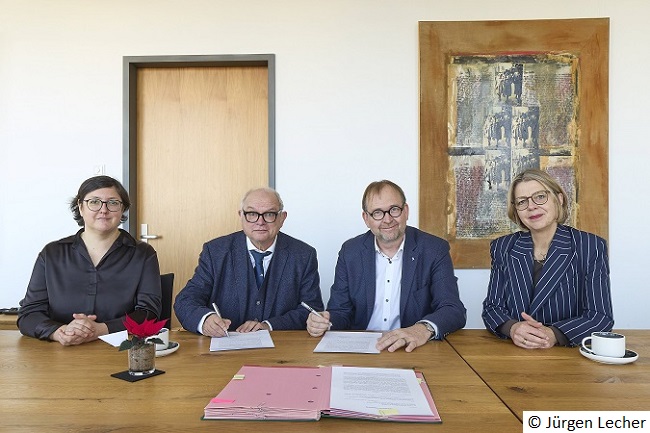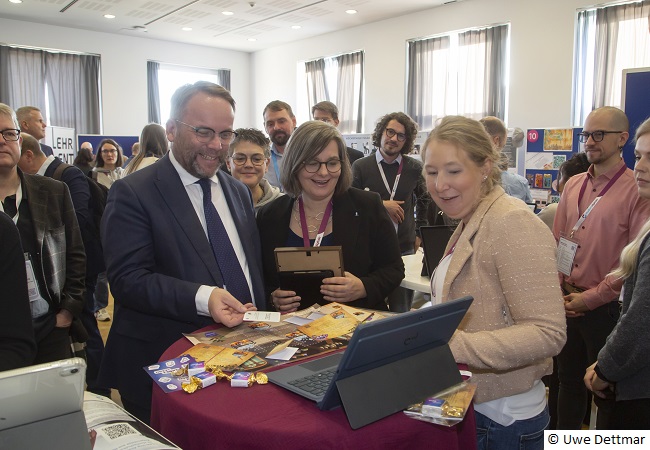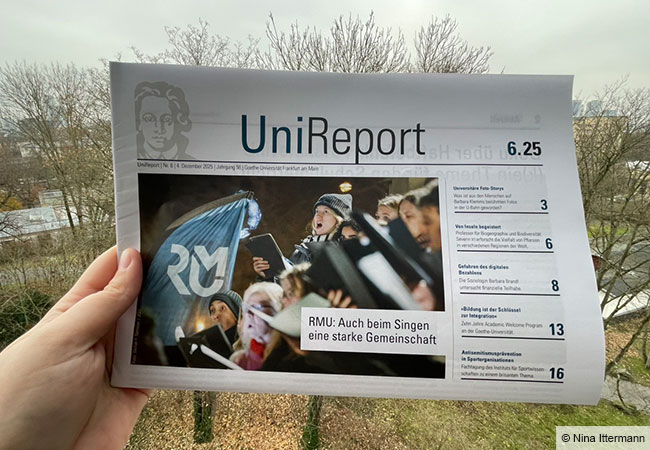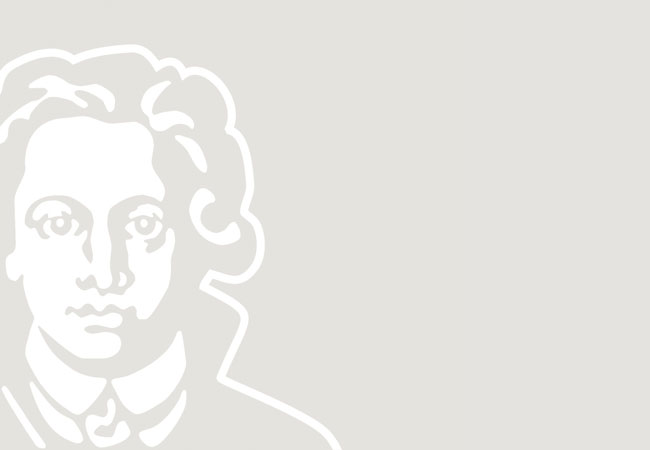Physician Andrea Ablasser from the École polytechnique fédérale de Lausanne, virologist Glen Barber from Ohio State University and biochemist Zhijian ‘James’ Chen from the University of Texas Southwestern Medical Center at Dallas will receive the Paul Ehrlich and Ludwig Darmstaedter Prize 2025, the Scientific Council of the Paul Ehrlich Foundation announced today. The award honors the prizewinners’ discovery of the cGAS-STING signaling pathway, i.e. the alarm system that sounds when, in the event of infection, cancer or cellular stress, DNA enters a cell’s plasma. Once this happens, the police of the innate immune system is immediately called into action. Drugs interfering with this signaling pathway are currently under development.
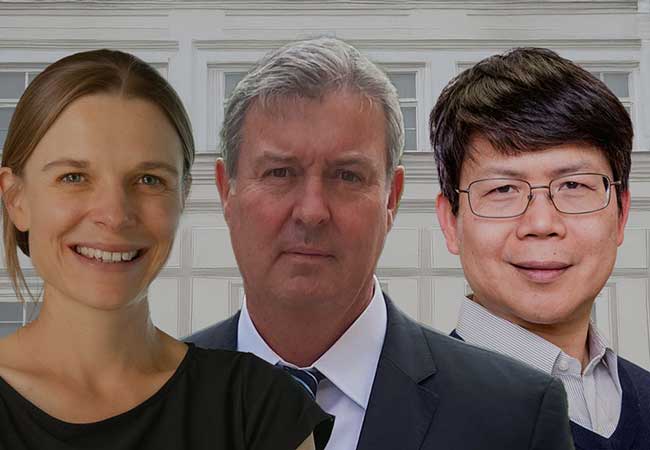
It is extremely dangerous when, in response to either viral intruders or damage within the cell itself, DNA appears in the cytoplasm of a cell. Our immune system is then called upon to react immediately and initiate defensive measures. Just how it manages to do this is what the prizewinners researched and learned between 2008 and 2013 and have since been able to clarify more and more comprehensively. What they discovered are the stations and signals of an intracellular alarm system without which we could not survive. „The cGAS-STING signaling pathway is a foundation of our innate immune defense that has long been sought after,“ explains Prof. Thomas Boehm, chairman of the Paul Ehrlich Foundation’s Scientific Council. „With their discovery, the award winners have opened up the possibility for medicine to treat infections, cancer and inflammatory diseases more effectively than before.“
Ilya Mechnikov had already reported that nucleic acids such as DNA can trigger an immune reaction in 1908, when he was awarded the Nobel Prize for Medicine, which he shared with Paul Ehrlich. How this reaction takes place at the molecular-biological level only began to be clarified one hundred years later, in 2008, when Glen Barber and his team discovered a protein, that he called STING. This protein is anchored in the membrane of the cell’s extensive tubular system, the endoplasmic reticulum (ER). Once an infection with DNA viruses occurs, STING commands certain genes in the cell nucleus to immediately start producing interferons. It is therefore, as the abbreviation says, a STimulator of INterferon Genes. The interferons are distributed in the surrounding tissue and stimulate the production of phagocytes and natural killer cells as well as other immune messengers. How STING learned that DNA has appeared in the cytoplasm remained a mystery until 2012, when Zhijian ’James’ Chen and his team solved it. With extraordinary biochemical sophistication, Chen isolated and identified a small ring-shaped molecule – cyclic guanosine monophosphateadenosine monophosphate (cGAMP) –, which consists of two nucleotides and is capable of activating STING, and later succeeded at doing the same for the enzyme cGAS, which catalyzes the formation of cGAMP. In 2013, Andrea Ablasser characterized cGAMP in detail and showed that its production and structure differ chemically from those of other dinucleotides. Ablasser was awarded the Paul Ehrlich and Ludwig Darmstaedter Early Career Award 2014 for this achievement.
The prizewinners’ discoveries provide the following overall picture: The enzyme cGAS acts as a sensor for DNA in the cytoplasm. It clasps the DNA strands. Thereby it is enabled to change its conformation in such a way that it can produce the chemically unique messenger substance cGAMP from the molecules GTP and ATP, which are abundant in the cell’s interior. cGAMP in turn triggers the transducer STING, which then brings other signal molecules into the alarm chain. The target of this relay is the genes in the cell nucleus, according to whose plan interferons and other immune messengers are produced.
Over the past decade, the three prizewinners have mapped the branches of the signaling pathway they discovered in ever greater detail, paying particular attention to the fact that the cGAS sensor does not differentiate between foreign and own DNA. This makes sense, considering that the cell’s own DNA normally only occurs in the cell nucleus and in the mitochondria. If it leaks into the cytoplasm, as in cancer cells for example, cGAS has to kick in and switch on the immune defense. However, this is also risky because it can lead to unfounded immune attacks on the body – something against which our cells have effective protective mechanisms. However, the older we get, the more likely these mechanisms are to fail. This explains the rising incidence of non-infectious inflammations, also known as sterile inflammations, which are the basis of classic autoimmune, cardiovascular and neurodegenerative diseases, including Parkinson’s. Sterile inflammations are characterized by an overactive cGAS-STING signaling pathway.
Substances that inhibit this signaling pathway therefore have great therapeutic potential and play an important role in the research of many pharmaceutical companies. Andrea Ablasser succeeded in synthesizing the first STING inhibitor in 2018.Agonists of this signaling pathway are not only being tested in vaccine development, but also as cancer drugs, and show strong preclinical antitumor effects in combination with checkpoint inhibitors.
Andrea Ablasser, born 1983, is Professor of Food Science at the École polytechnique fédérale de Lausanne in Switzerland. https://www.epfl.ch/labs/ablasserlab/
Glen Barber, born 1962, is Professor in the Department of Surgery and Director of the Center for Innate Immunity and Inflammation, Pelonia Institute for Immuno-Oncology at the Ohio State University, Columbus, Ohio, USA.
https://cancer.osu.edu/for-cancer-researchers/research/research-labs/barber-lab
Zhijian J. Chen, born 1966, is George L. MacGregor Distinguished Chair in Biomedical Science, Howard Hughes Medical Investigator and Professor of Molecular Biology at the University of Texas’ Southwestern Medical Center in Dallas, USA. https://labs.utsouthwestern.edu/chen-zhijian-james-lab
The Paul Ehrlich and Ludwig Darmstaedter Prize is the most prestigious medical prize in Germany. It is endowed with 120,000 euros and is traditionally awarded on Paul Ehrlich’s birthday, March 14, in Frankfurt’s Paulskirche. It honors scientists who have made outstanding contributions in the field of research represented by Paul Ehrlich, particularly in immunology, cancer research, hematology, microbiology and chemotherapy. The prize, which has been awarded since 1952, is financed by the Federal Ministry of Health, the German Association of Research-Based Pharmaceutical Companies and earmarked donations from the following companies, foundations and institutions: Else Kröner-Fresenius-Stiftung, Sanofi-Aventis Deutschland GmbH, C.H. Boehringer Sohn AG & Co KG, Biotest AG, Hans und Wolfgang Schleussner-Stiftung, Fresenius SE & Co KGaA, F. Hoffmann-LaRoche Ltd, Grünenthal Group, Janssen-Cilag GmbH, Merck KGaA, Bayer AG, Georg von Holtzbrinck GmbH & Co KG, GSK GlaxoSmithKline GmbH & Co. KG, B. Metzler seel. Sohn & Co KGaA. The prize winners are selected by the Board of Trustees of the Paul Ehrlich Foundation. A list of the members of the Board of Trustees is available on the website of the Paul Ehrlich Foundation.
The Paul Ehrlich Foundation is a legally dependent foundation administered in trust by the Association of Friends and Sponsors of Goethe University. Professor Dr. Katja Becker, President of the German Research Foundation, who also appoints the elected members of the Foundation Council and the Board of Trustees, is Honorary President of the Foundation, which was established by Hedwig Ehrlich in 1929. The Chairman of the Scientific Council of the Paul Ehrlich Foundation is Professor Dr. Thomas Boehm, Director at the Max Planck Institute of Immunobiology and Epigenetics in Freiburg, and the Chairman of the Board of Trustees is Professor Dr. Jochen Maas. In his function as Chairman of the Association of Friends and Sponsors of Goethe University, Prof. Dr. Wilhelm Bender is also a member of the Board of Trustees of the Paul Ehrlich Foundation. In this function, the President of Goethe University is also a member of the Board of Trustees.




